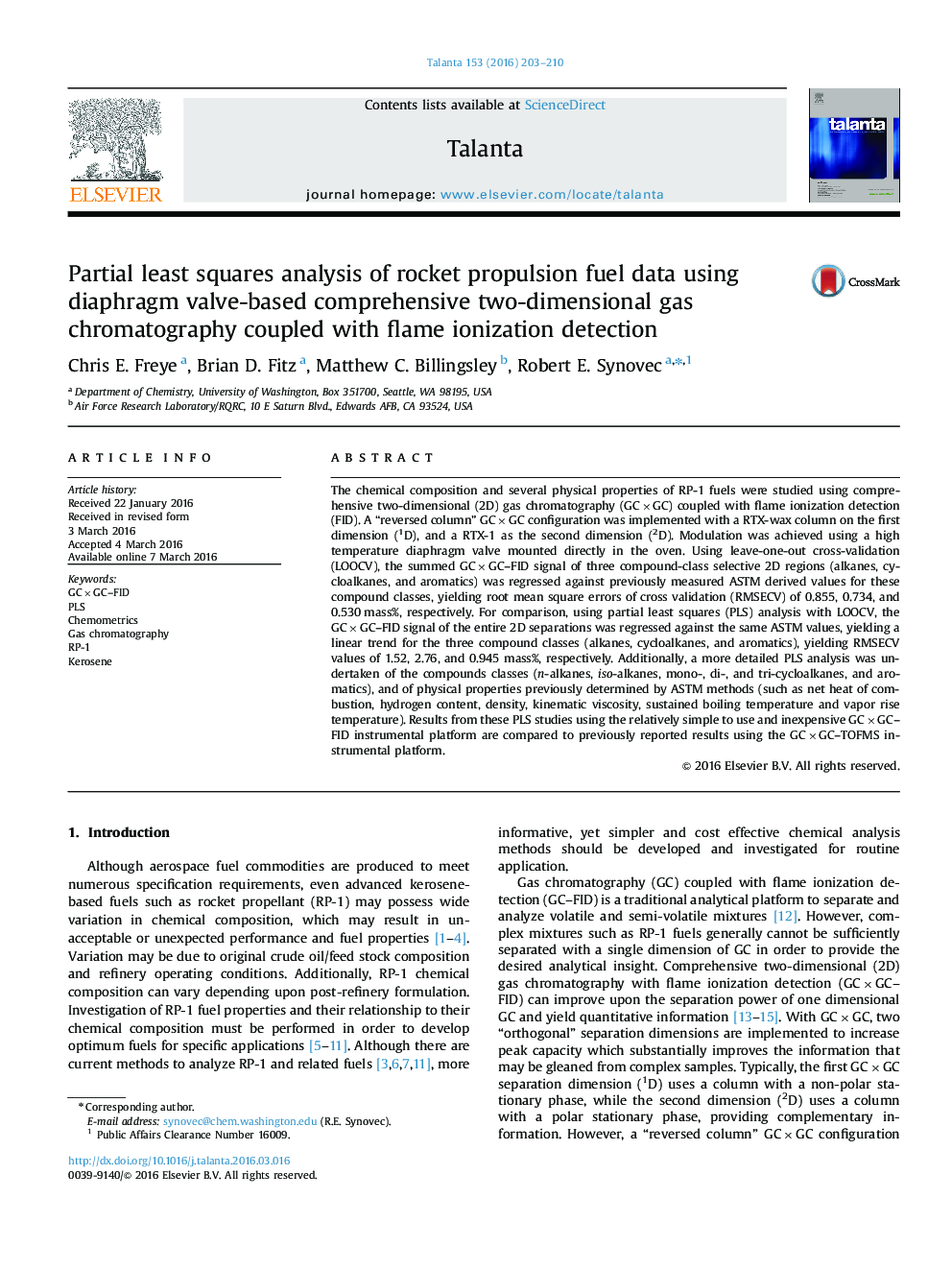| کد مقاله | کد نشریه | سال انتشار | مقاله انگلیسی | نسخه تمام متن |
|---|---|---|---|---|
| 1242577 | 1495782 | 2016 | 8 صفحه PDF | دانلود رایگان |
• Kerosene-based rocket fuels are analyzed via GC×GC–FID.
• Modulation is achieved using a high temperature diaphragm valve mounted in the oven.
• Chemometric methods are used to regress GC×GC–FID data against ASTM values.
• Specific compound classes and physical properties are chemometrically modeled.
The chemical composition and several physical properties of RP-1 fuels were studied using comprehensive two-dimensional (2D) gas chromatography (GC×GC) coupled with flame ionization detection (FID). A “reversed column” GC×GC configuration was implemented with a RTX-wax column on the first dimension (1D), and a RTX-1 as the second dimension (2D). Modulation was achieved using a high temperature diaphragm valve mounted directly in the oven. Using leave-one-out cross-validation (LOOCV), the summed GC×GC–FID signal of three compound-class selective 2D regions (alkanes, cycloalkanes, and aromatics) was regressed against previously measured ASTM derived values for these compound classes, yielding root mean square errors of cross validation (RMSECV) of 0.855, 0.734, and 0.530 mass%, respectively. For comparison, using partial least squares (PLS) analysis with LOOCV, the GC×GC–FID signal of the entire 2D separations was regressed against the same ASTM values, yielding a linear trend for the three compound classes (alkanes, cycloalkanes, and aromatics), yielding RMSECV values of 1.52, 2.76, and 0.945 mass%, respectively. Additionally, a more detailed PLS analysis was undertaken of the compounds classes (n-alkanes, iso-alkanes, mono-, di-, and tri-cycloalkanes, and aromatics), and of physical properties previously determined by ASTM methods (such as net heat of combustion, hydrogen content, density, kinematic viscosity, sustained boiling temperature and vapor rise temperature). Results from these PLS studies using the relatively simple to use and inexpensive GC×GC–FID instrumental platform are compared to previously reported results using the GC×GC–TOFMS instrumental platform.
Figure optionsDownload as PowerPoint slide
Journal: Talanta - Volume 153, 1 June 2016, Pages 203–210
